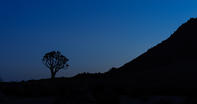Hunter-Gatherer Lifestyles
It’s hard to say when the Bushmen (or San) developed as a distinct cultural group – some say it was as long as 40 000 or 30 000 years ago, when a prolonged dry period separated people in the south-western part of the subcontinent from the more Negroid tribes in the north.

In any case, the Bushmen utilised and refined Later Stone Age technology, which included blades, borers and points, many of which were attached to wooden shafts to form spears or knives.
The bushmen also developed a social structure that revolved around their traditional hunter-gatherer lifestyles.
As a rule, it was the men who did the hunting, while the women gathered bulbs, berries and other plants. Their tacit grasp of nature saw these small family groups moving around the land in harmony with the game and the seasons.
Petroglyphs
In terms of religion, the bushmen enjoyed a sophisticated ideology that combined the natural world with the spiritual realm. This is expressed in their numerous rock paintings, which often illustrate shamanistic trance dances. In the Richtersveld, however, no cave paintings have been identified. Instead, we find petroglyphs – engravings made by cutting into the surface of rocks with a sharp stylus or rock hammer.
These enigmatic and beautiful petroglyphs depict a variety of subjects, ranging from abstract geometric patterns to more realistic depictions of animals, such as zebra and eland. The study of these petroglyphs is still in its infancy and, sadly, many of the sites have been damaged by mining and/or careless visitors. Access to most of these sites is now restricted to prevent further damage.
The number of bushman living in Namaqualand and the Richtersveld would have, of necessity, been relatively low. This was, after all, a thirstland with only a few reliable water sources. The coast was a much better proposition, however, and there are a number of archaeological sites that demonstrate significant interaction between the Bushmen and marine resources such as seals and shellfish.
These coastal populations have been called ‘strandlopers’ (beach walkers) and evidence of their habitation is found at various locations along the shores of Namaqualand and, indeed, most of southern Africa.